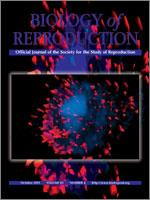Stimulation of full-grown amphibian oocytes with progesterone initiates a nontranscriptional signaling pathway that converges in the activation of Cdc2/cyclin B and reentry into meiosis. We observed that cholesterol depletion mediated by methyl-beta-cyclodextrin (MbetaCD) inhibited meiotic maturation, suggesting involvement of membrane rafts. In the present study, we further characterized caveolae-like membranes from Rhinella arenarum oocytes biochemically and functionally. The identification by mass spectrometry of a nonmuscle myosin heavy-chain associated with caveolar membranes showed evidence of direct involvement of the underlying cytoskeletal environment in the structure of oocyte rafts. Biophysical analysis using the fluorescent probe Laurdan revealed that MbetaCD-mediated cholesterol depletion affected membrane lipid order. In line with this finding, cholesterol removal also affected the localization of the raft marker lipid GM1. Results demonstrated that ceramide is an effective inducer of maturation that alters the distribution of the raft markers caveolin-1, SRC, and GM1, while progesterone seems not to affect membrane microdomain integrity. Cholesterol depletion had a greater effect on ceramide-induced maturation, thus suggesting that ceramide is an inducer more vulnerable to changes in the plasma membrane. MbetaCD treatment delayed tyrosine phosphorylation and MAPK activation in progesterone-induced maturation. Functional studies regarding tyrosine phosphorylation raise the possibility that the hormone receptor is located in the nonraft membrane in the absence of ligand and that it translocates to the caveola when it binds to progesterone. The presence of raft markers and the finding of signaling molecules from MAPK cascade functionally associated to oocyte light membranes suggest that this caveolae-rich fraction efficiently recreates, in part, maturation signaling.
How to translate text using browser tools
8 June 2011
Nongenomic Steroid- and Ceramide-Induced Maturation in Amphibian Oocytes Involves Functional Caveolae-Like Microdomains Associated with a Cytoskeletal Environment
Jorgelina Buschiazzo,
Telma S. Alonso,
Mirtha Biscoglio,
Silvia S. Antollini,
Ida C. Bonini
ACCESS THE FULL ARTICLE

Biology of Reproduction
Vol. 85 • No. 4
October 2011
Vol. 85 • No. 4
October 2011
amphibian oocytes
caveolae
Ceramide
gamete biology
kinases
MAPK cascade
meiotic maturation




